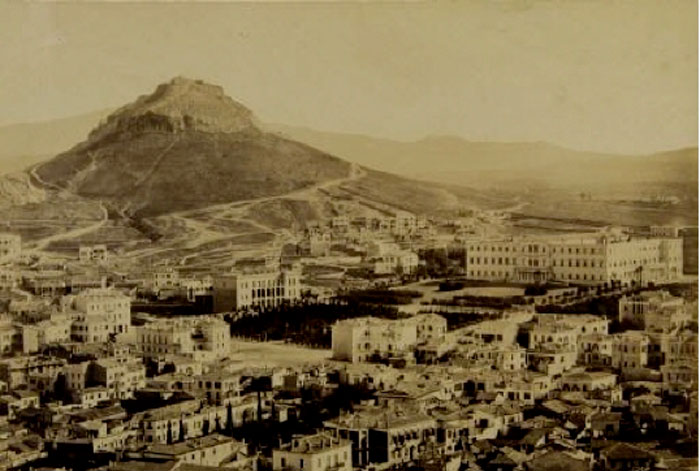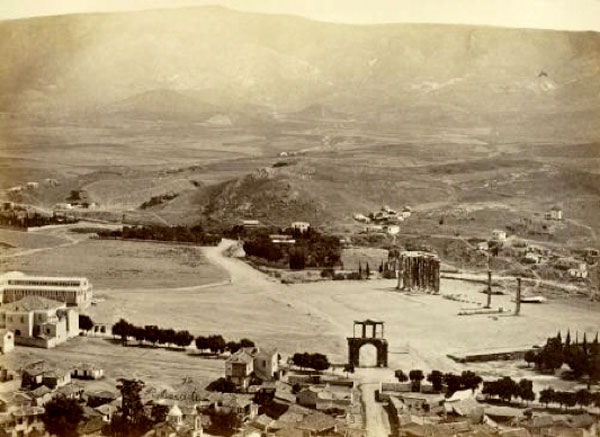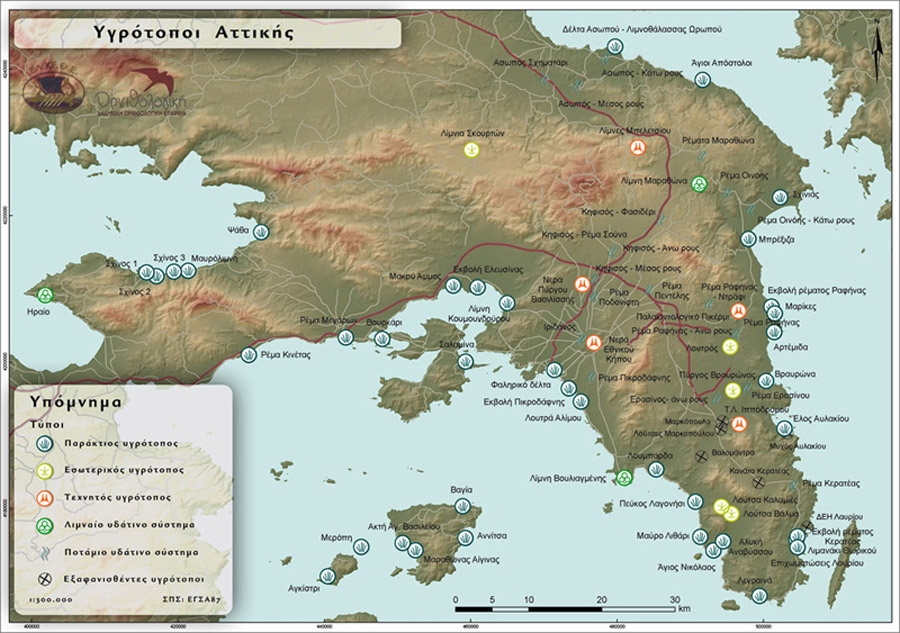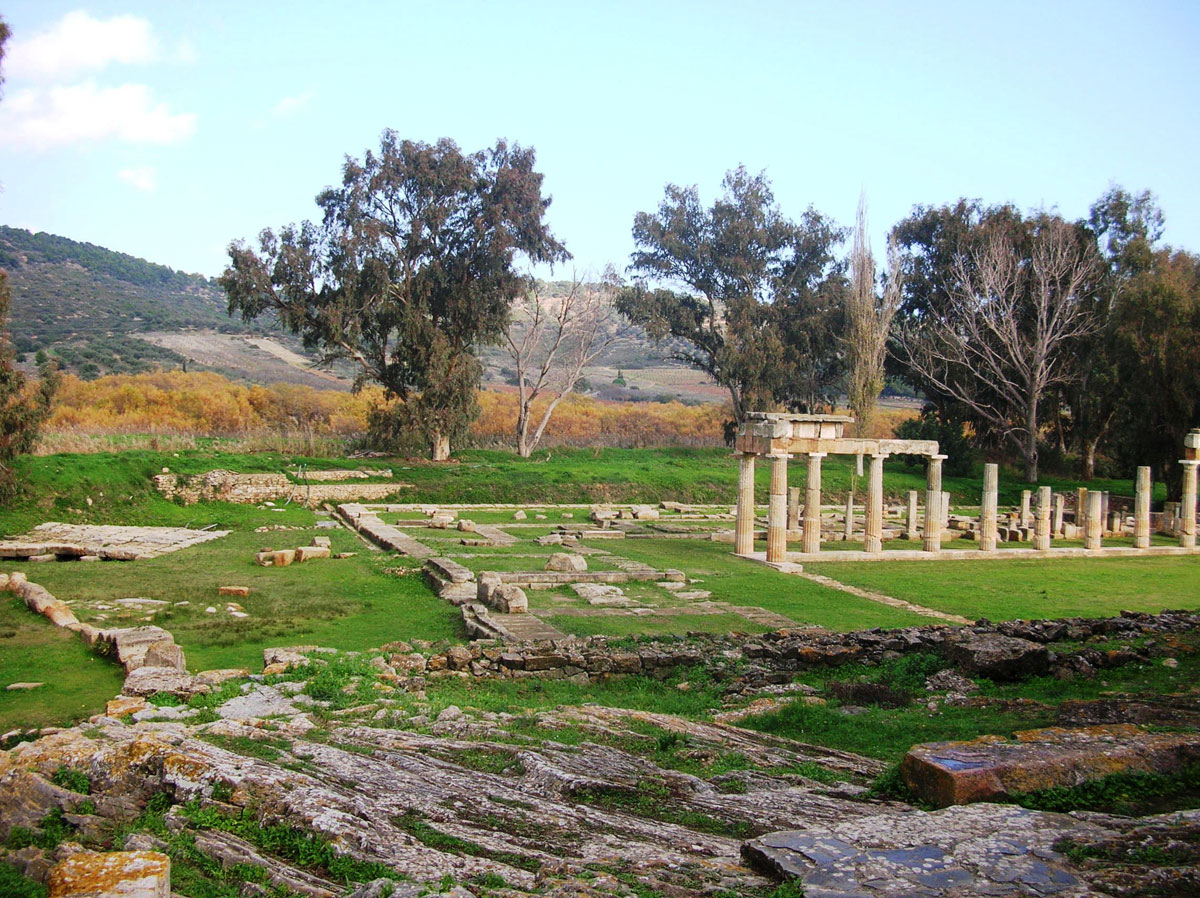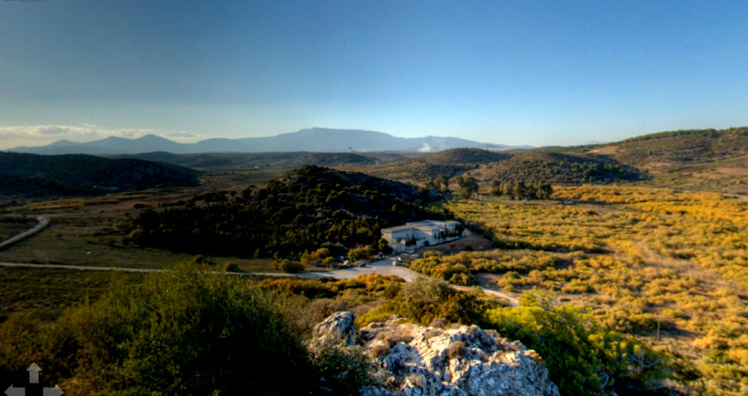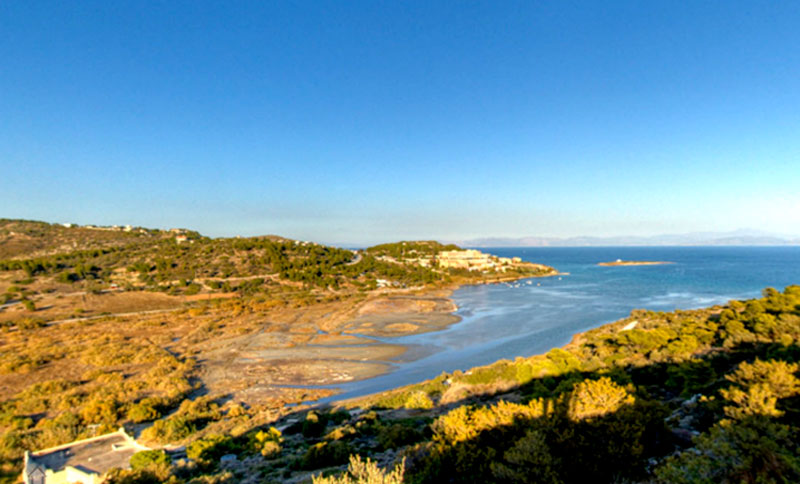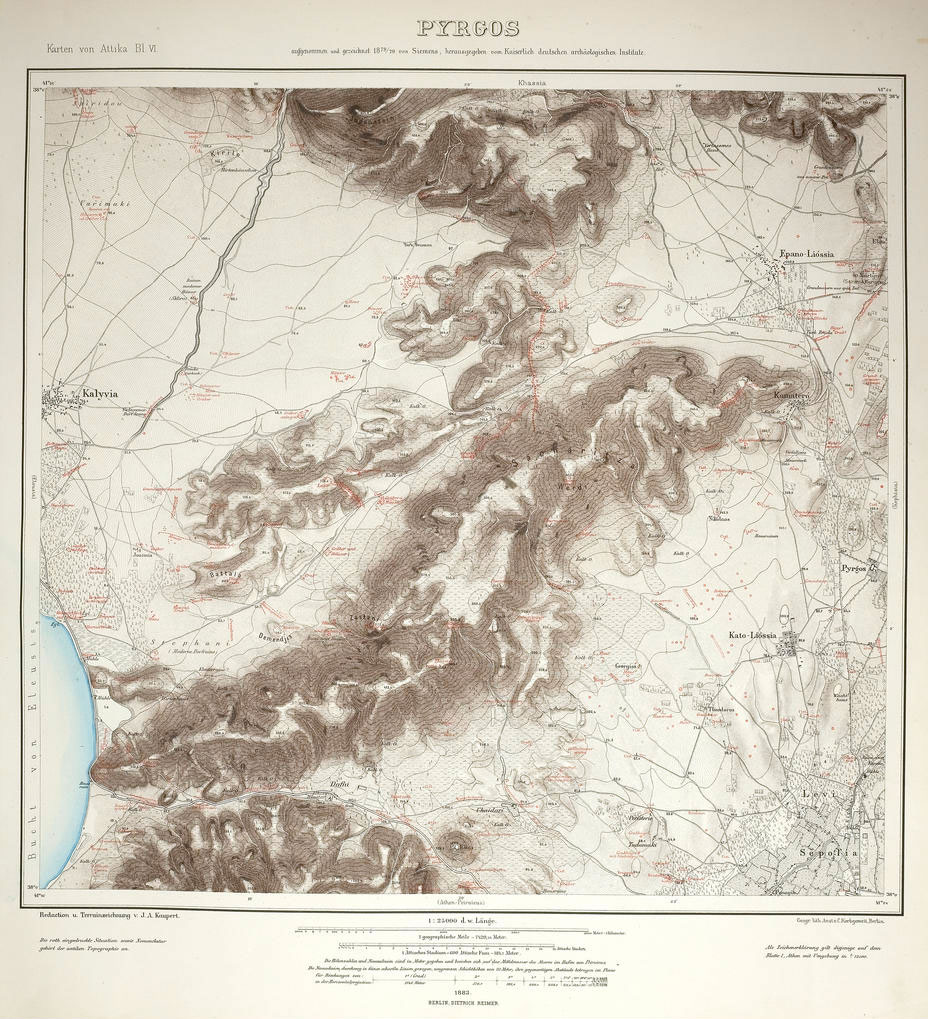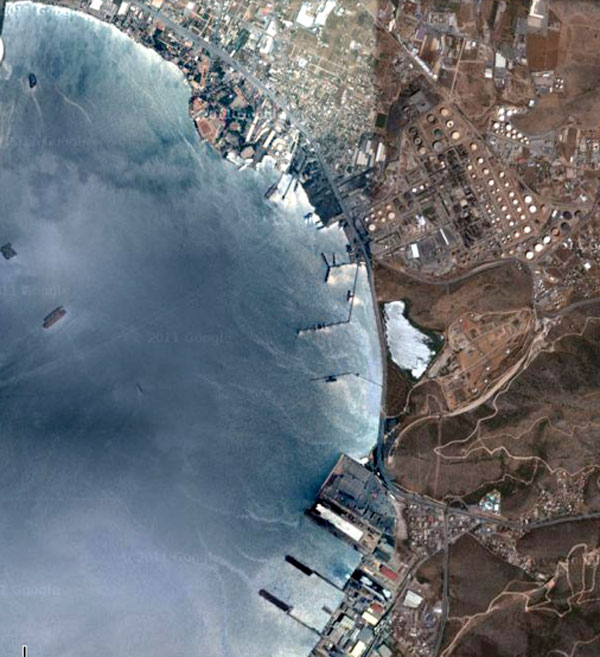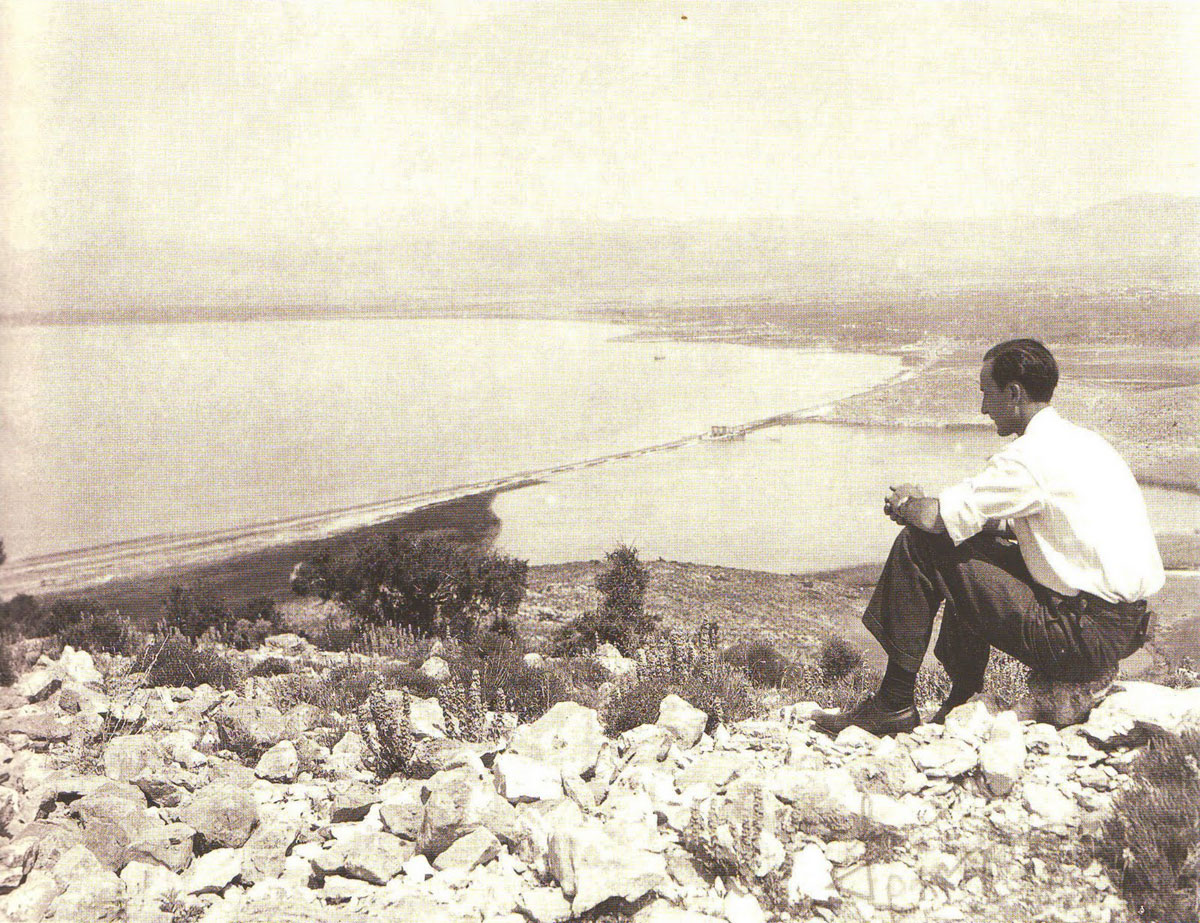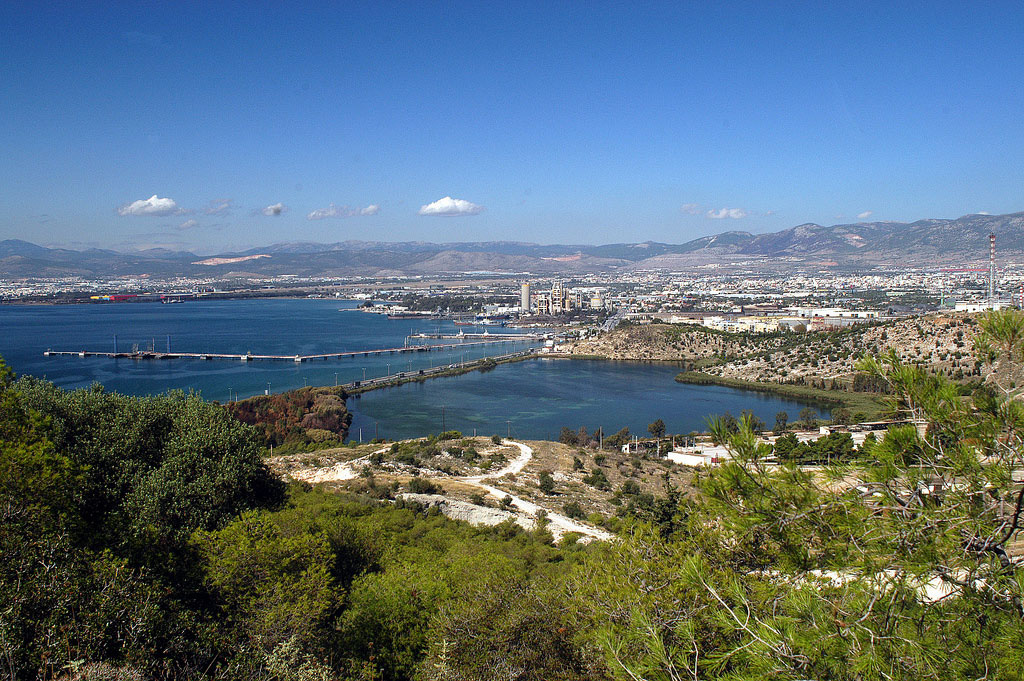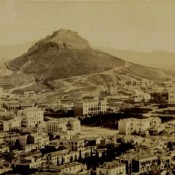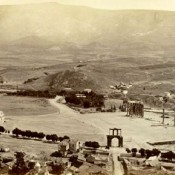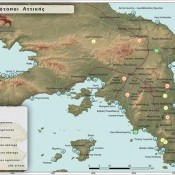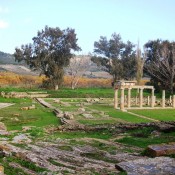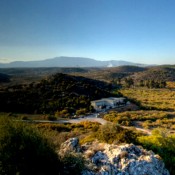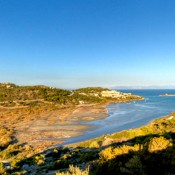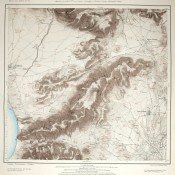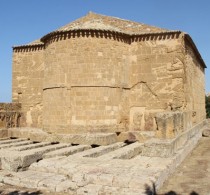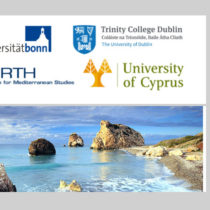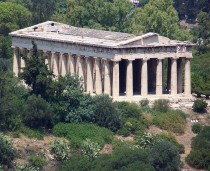The unique place always occupied by the Attic landscape in both its inhabitants’ experiences and the memories of the travelers who visited it was the result of its composition’s particular features. The coexistence of a wealth of important monuments combined with the simple clear shapes of a natural world both familiar and on a human scale led to the shaping of a landscape of particular beauty. This joint course followed by monuments and nature through time resulted in the creation of an aesthetic approach in which these elements can be identified and understood as a whole, forming the Attic landscape. Fragments of the authentic Attic landscape have survived till today in the archaeological sites, conveying a multitude of meanings and representative images of an earlier landscape, thus becoming a necessary alternative to the uniform structures of today’s city. As vehicles for memory and nature, they are even capable of influencing modern man’s relationship with the city’s historic character which also altered over time like the Attic landscape.
The identification of nature with monuments already from the time of their creation continues to survive in harmonious and particularly fragile units inside the archaeological sites. It is interesting to examine how, from antiquity to the present, archaeological sites and their natural surroundings interrelate, particularly compared to various modern environments. The aim is to come to some reliable conclusions regarding the management of these sites. Not only is it useful to make a survey of the character and condition of nature in Attica from antiquity to the present but also to investigate the ancient and modern world’s views on the concepts of environment and monuments. Moreover, the study of specific examples of the attic landscape in this context could trigger off proposals of specific ideas and solutions for the correct joint management of sites rich in a combined wealth of monuments and nature. This would also create a model for the management and common practices for dealing with these sites not only in Attica but all over Greece so as to exploit the country’s rich cultural and natural heritage.
Nature from antiquity to the present and the perceptions of the ancient and modern world
The rich natural world of antiquity is already described in the works of Homer where lush forests are mentioned, known as «ύλη» (material). It is also mentioned in older traditions of Homer’s era, according to which humans were born from oak trees (Odyssey XIX 163) and the loss of a tree was equivalent to the loss of a brave warrior (Iliad, IV 482-487).The respect shown to “sacred nature’’, the first dwelling place of both gods and men, did not stop humans from exploiting it and often destroying natural resources from the early era of the 8th century BC (Iliad, XXI 119-323). By the classical era, erosion and deforestation had become marked, leading to visible changes in the landscape and a shortage of timber. The region around Athens had already been deforested to a great degree, while the Attic landscape is described as bare like the “bones of a wasted body” (Plato, Critias 111 BC). In Roman times the shortage of timber becomes noticeable, while European travellers of modern times see a similar picture. Nevertheless, nature’s simplicity combined with Attica’s dry Mediterranean climate, despite the region being arid, always had to show unique flora and fauna creating a special setting for the monuments of the region. The changes that completely transform the Attic landscape are brought about during the 19th and 20th century with the quarrying of the historic hills of Athens (note 1), the covering over of rivers, the disappearance of the wetlands besides pollution and sprawling urban construction (note 2). The survival of the natural environment is nowadays protected by appropriate national and international conventions that specify the regions that need protection (note 3). Modern man becomes more and more aware of the importance of conserving natural resources. In antiquity, man expressed this concern through the myth of Erysichthon from Thessaly who was condemned to everlasting hunger and death because he did not respect the grove of an early tradition of worship, Mother Earth known as Gaia, who in this case was Demeter. “As an expression of the deep rooted interest that ancient man felt for every occurrence in nature” (note 4) myth was created as a first attempt to explain the natural world. Subsequently, through Philosophy and Science, ancient man attempted to discover the way the world was created and the natural order of things. He developed environmental ethics and explored the connection between nature and the “ideal city”. He searched for healing properties in nature, and through medicine and botany he offered the advantages enjoyed by the gods as a gift to his patients. He recognized the benefits of agriculture in discovering the workings of nature and perceived the need to find ways of efficiently managing natural resources. Eventually, having realized, due to the shrines, the catastrophic impact of the human factor, he officially started to protect nature by passing laws (note 5) and penalties for those who were not aware of its value (note 6).
The monument in the ancient and modern world
There is a great difference between antiquity and today regarding the way a monument’s meaning was perceived. In antiquity, the monument was not just identified with the concept of the monumental but mainly with the idea of memory. This mentality of preserving and respecting the memory of those who had a worthy and sacred character led to the creation of numerous monuments.
The following were considered to be monuments: parts of nature, spots that preserved traces of a divine presence, funerary monuments associated with the worship of ancestors, of legendary or mortal heroes, even regions of historical importance where important historical events and battles had taken place, as well as statues that recalled gods and men. All monuments were raised freely in their natural environment, made of natural materials as an extension of nature and in perfect harmony with it. It is remarkable that even when dimensions were monumental, they resulted spontaneously and depending on specific needs, leading to an absolute respect for the natural order of things. Nevertheless the location of a monument was not accidental. Besides the above factors and the natural environment, the site of the sanctuaries was determined by factors such as sacredness, historical memory or landscape as well as administrative and political factors which aimed to strengthen the ties between the various districts of interest and their inhabitants (note 7).
Nowadays the public at large mistakenly often only looks for the monumental aspect of the monument. “Cultural goods that constitute material testimonies are considered as monuments. These belong to the cultural heritage of a country and demand special protection”. This is defined by Law no. N.3028 On the Protection of Antiquities, which also makes a clear distinction between categories of monuments while their immediate natural surroundings (note 8) are included in their protection. Thus, not only is the “monumental” of value, but also any moveable or static monuments with their surroundings. The latter act as memory vehicles of the culture that created them and strengthen the sense of the city’s continuity and its staying power through time. Today, the monuments of the city are still directly linked to their environment when this is preserved. They also act as a vehicle for memories, as a field of study in the historical continuity of different eras and of the single historical background of urban structures (note 9) as well as being places which have been continuously experienced through time. Even when they lose their natural setting and become trapped in the urban fabric of today, they continue to be a kind of public space which interacts uninterrupted and in a variety of ways with the city’s inhabitants. Monuments today constitute a unique cohesive memory element of the city’s historical physiognomy.
Vravrona and Lake Koumoundourou – Complex cases of management
Vravrona
In Eastern Attica, within the municipality of Markopoulos, between the ports of Rafina and Portorafti, is the region of Vravrona. This is the location of an important ancient sanctuary dedicated to the goddess Artemis. At the foot of a low hill of an important prehistoric citadel, just seven hundred metres from the small enclosed bay of Vravrona, the famous sanctuary was created, dedicated to the patron goddess, protector of fertility and childbirth. The starting point for her worship was the mythic tomb of 700 BC known as the “kenerion”, to the south east of the citadel rock where other important buildings are also to be found. The tomb belonged to the priestess Iphigeneia, holder of the keys, who was worshipped as a chthonic heroine. There was also a temple of the early 5th century BC, the first Π shaped roofed colonnade, serving as a residence for the “arktoi” (bears), little girls who had been dedicated to the goddess, as well as a series of facilities for the functioning of the site. All the above constituted the sanctuary of a cult that, every four years, linked the city to the wider region with a procession from the Vravroneion on the Athens Acropolis to Vravrona (note 10).
The Erasinos torrent, close to the sanctuary, always nourished the countryside in the region but it often caused flooding of the sanctuary which was probably the reason the site was abandoned in the 3rd century BC. Erasinos, that flows into the Vravrona bay, still threatens the region, but has also created there an important wetland with rich flora and fauna. The complex made up of the wetlands and its surroundings are protected by the Natura 2000 treaty as a Site of Community Interest (SCI) under the name “Vravrona – Coastal Marine Zone” and the code number GR3000004.
The 2nd Ephorate of Prehistoric and Classical Antiquities, the Municipality of Markopoulos, the Greek Ornithological Society, the local community as well as Athens International Airport E. Venizelos are all active in protecting and managing the area thus ensuring both its sustainability and its availability to visitors. Moreover, the renovation of the museum near the site is a positive development regarding the site’s image while any problems arising as to the conservation of the archaeological remains and the wetlands are tackled successfully. The only unresolved issue is the Erasinos torrent whose riverbed, it had been suggested some years back, should have been cemented over, a disastrous decision for the natural ecosystem as a whole. It is therefore imperative that a radical solution be found to the issue, in a manner that is friendly both towards the monuments and the protected wetlands. The area is managed remarkably well, resulting in a favourable response from the public and the local community and it can become an important example of combined management of natural and archaeological wealth.
Lake Koumoundourou
In western Attica, 15 klms along the Athens-Corinth National highway, within the municipality of Aspropyrgos, to the north of the bay of Eleusis, is a brackish lake of 143.000 sq.m. formed by subterranean springs of water (note 11). It is called lake Koumoundourou (note 12) and is unknown to the general public. During antiquity, together with a smaller lake to its north, it made up the two lakes of Rheitoi, dedicated to Demeter and Persephone respectively. The northern lake was drained during the 1950s to set up refineries as the area of the lake is located in a zone of heavy industry mainly of petroleum products. There is severe and constant pollution both in the atmosphere and the sea to which lake Koumoundourou has subterranean access. Moreover, underground spills of petroleum products and the lake’s location near the drainage basin of the Fyle landfill site, threaten its sustainability as it is home to many bird species some of which are protected or rare (note 13).
The lake is not designated as a protected area (note 14), however since 1974, it constitutes, in addition to the fifty metres around it, an archaeological site, according to ΦΕΚ 5/Β/8-1-74 (government gazette), because there are remains of an ancient dam in it, according to the survey by I. Travlos in 1935 and 1936(note 15). The 3rd Ephorate of Prehistoric and Classical Antiquities, The Greek Ornithological Society, The Aspropyrgos Municipality, The Hellenic Centre for Marine Research, local societies and The Ongoing Movement of Haidari are some of the basic agencies in the area (note 16) which have acted many times in the interests of this specific environment, while some surveys have also been carried out (note 17). The ancient Reitoi lakes were always a landmark of the area, a natural boundary between the Municipalities of Athens and Eleusis. They were also a reference point both for the procession of the initiates of the Eleusinian Mysteries (the mystes) and for the ancient and modern European travellers as well as being part of an area of particular natural beauty and of unique archaeological and historic value (note 18). Today, lake Koumoundourou survives as the last reminder of a landscape of the past and as a final refuge for birds of the region. The inhabitants of Western Attica need to protect the lake by legally established means and to see to its immediate decontamination. It also presents a challenge regarding the coexistence of heavy industry with the last remaining elements of natural and historical wealth in the region. This would be proof that a country possesses a modern culture, by showing respect for its wealth and the ability to manage it.
Conclusions-Proposal
The areas mentioned above are examples of sites that combine natural wealth and wealth in monuments but are different in regards to their location (East-West Attica), their environment (rural-industrial) and the conditions of their management and protection. In a more general context, they could provide a basis both for theoretical conclusions and a proposal for practical solutions.
More specifically, the following conclusions can be drawn: a) Archaeological sites are points of reference, they are identical with their natural environment and are places of commemoration. b) Many different agencies get involved each time, but in the long run this does not guarantee the successful management of the site due to the lack of direct cooperation and single coordination, c) Serious problems include the lack of legal protection from an environmental and archaeological point of view, the public’s inability of access, the unclear division of the use of land and the local society’s lack of participation in important decision making. In particular, over the last few years, the local society has increased its efforts and its desire to participate in the cultural wealth of its locality. Moreover, the new Strategic Plan of Athens SPA 2021 officially states its intention that citizens should participate (note 19). In the new plan, priority is given to a “combined policy for the protection of the natural environment and the enhancement of the cultural identity of Attica”, while “Priority landscapes” are designated in both urban and suburban districts which include the previously discussed areas of Vravrona and the axis of Eleusina-Lake Koumoundourou-Daphne Monastery.
These new conditions dictate new strategies in the management of these special places which combine nature and culture. A new management model can be created using as its essentials the monuments, the natural surroundings, the city and the local community. All the agencies involved should have a sense of social responsibility and the chance to cooperate and offer their services on an equal basis.
It would be useful if on this basis, the following objectives were to be established: 1) a written record of those sites with the necessary features and the creation of a data base, 2) an examination of the legislation and the legal recognition of each region, 3) a written record of all the agencies, private and public, that are active in the area and the updating of the public, 4)the ensuring the region’s accessibility, 5) the participation of the local community and of volunteers and the offering of services by both, 6) continuous patrols on the area, its safeguarding and protection, a direct report of any problems to arise, the cleaning and maintenance of the site, 7) the forming of a coordinating team and a local team for implementation and 8) the submitting of different proposals and studies.
In order both to implement the above objectives and to manage in an organized and flexible way the sites that combine nature with culture, it is necessary to form a “Local Management Team” and a “Coordination Group”. The “Local Management Team” will function as a vehicle for the collaboration of all productive forces already active in these areas; these are namely, representatives of the environmental organizations operating in the region and representatives of the ephorate of antiquities responsible for the site, members of the local community as well as visitors and friends of the district. Volunteers can be from different backgrounds (individuals who have some training in a field and are already volunteers, firemen for example, but also individuals specializing in a field, who wish to offer their services for free) and representatives of the municipality. Participation in the “Local Management Team” will be equal for all, as will its membership. Its structure will in no way allow it to make final decisions but only to suggest solutions and make proposals to higher ranking agencies. Moreover, it will play an indirect role in coordinating the direct intervention and protection of the area. The aim of the collaboration of all the above will be the exchange of ideas , the reporting of problems and ultimately the proposal and finding of solutions at meetings held on a monthly or more regular basis when necessary. Apart from having a theoretical side to it, the “Local Management Team” will also be a work group. In other words, it will be able to offer necessary services on a daily basis.
Regarding the “Coordination Group”, it will have an interdisciplinary character and be made up of a few members trained in the sciences. This particular format will allow for a multifaceted database to be properly set up, maintained and renewed regularly, where all the regions of interest will be recorded. It will actually be the recipient of all information, proposals and surveys of local groups which, in turn, it will promote and submit to appropriate official government agencies such as the Ephorates of Antiquities, the Central Archaeological Council, and various Ministries. Its fundamental function is, therefore, that of a manager of local groups with a simple coordinative and transactional nature, able on each occasion to put into motion formal procedures and inspections.
The age old history of the region was constantly present in the countless remains of monuments that combined with the landscape made up the region’s two fold beauty creating an irresistible attraction for every traveler, visitor and invader. In modern times, it is imperative to preserve these values as they ensure the particular identity of Attica which is changing so much for the worse and continues to be threatened. These values and unique features are a legacy for future generations and it is our duty to safeguard and hand them down. This effort cannot, however, be the result of random processes. It has to be the outcome of the organized management and preservation of national treasures resulting from the social awareness and cooperation of both government agencies and ordinary citizens, as it concerns and affects everyone. Attica may no longer be “…one vast realm of wonder’’ as enthusiastically described by Lord Byron (note 20), but it is undoubtedly the place of this wonder’s memory. “The whole Athenian landscape has changed its visage …and was leveled by the steamroller of the times” D. Pikionis noted bitterly (note 21) but, nevertheless, it retains its memories and many spots can still be found where monuments and their natural surroundings are both preserved.
The only thing needed is the opportunity for the recovery and development both of the natural environment and the monuments by proper management and the avoidance of wrong handling and old fashioned approaches. Last but not least, these sites should be directly handed over to those who have always been on the receiving end, namely the public and the inhabitants of the area who are entitled both to experiencing their past heritage while making it a basis for their future.
Maria Xepapadakou, Archaeologist
M.Sc. in Management of Monuments: Archaeology, City and Architecture
